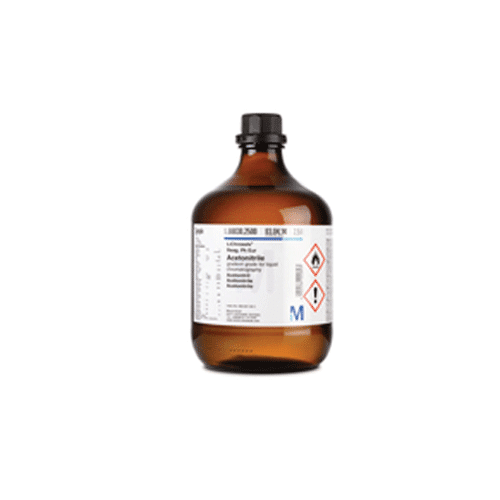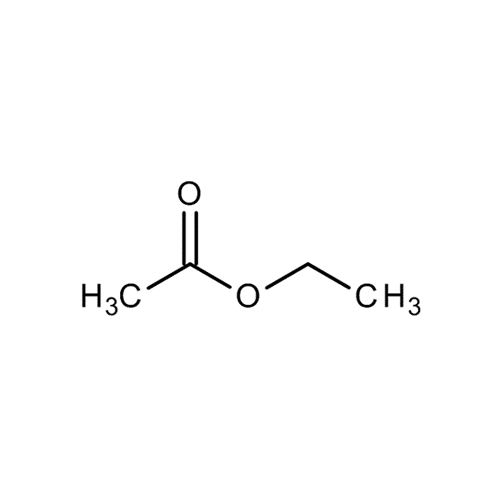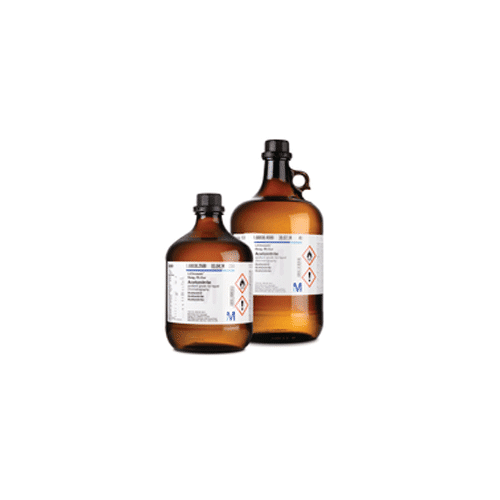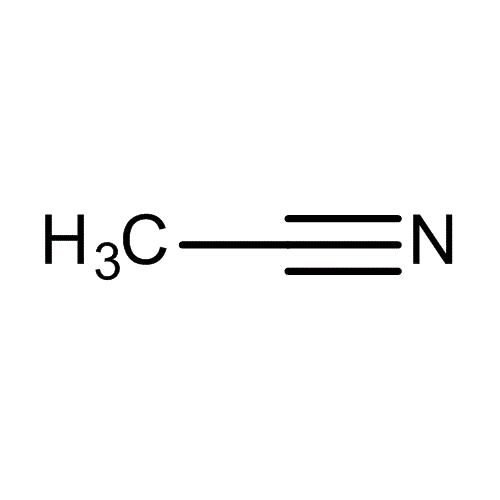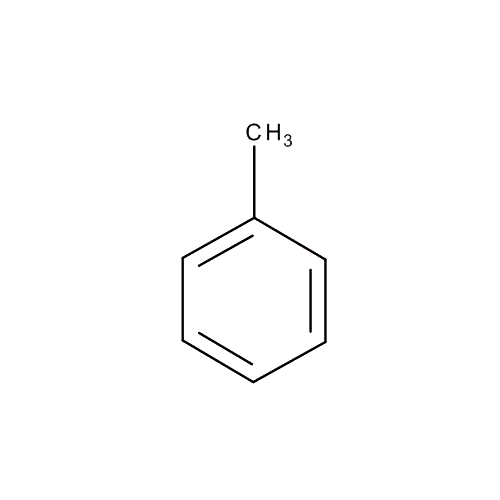
Silver Nitrate for Analysis EMSURE® ACS,ISO,Reag. Ph Eur (Merck)
Login to see pricesBrand:
Merck
Description
CAS Number: 7761-88-8
Chemical Formula: AgNO₃
Molecular Weight: 169.87 g/mol
Quality Level: MQ300
Tetrahydrofuran for liquid chromatography LiChrosolv®
Login to see pricesBrand:
Merck
Description
CAS number: 109-99-9
Chemical Formula: C₄H₈O
Molar Mass: 72.11 g/mol
Synonyms: THF, Tetramethylene oxide, Oxolane, Butylene oxide
With their high degree of UV transmittance, low particle count, low acidity and alkalinity and low evaporation residue level, LiChrosolv® solvents are ideal for reproducible separations. Since separations are normally carried out under gradient conditions in analytical HPLC, we offer solvents in “gradient grade” as well as “isocratic grade”. This enables to minimize the gradient effect of the solvent involved. Filtered by 0.2 µm filter
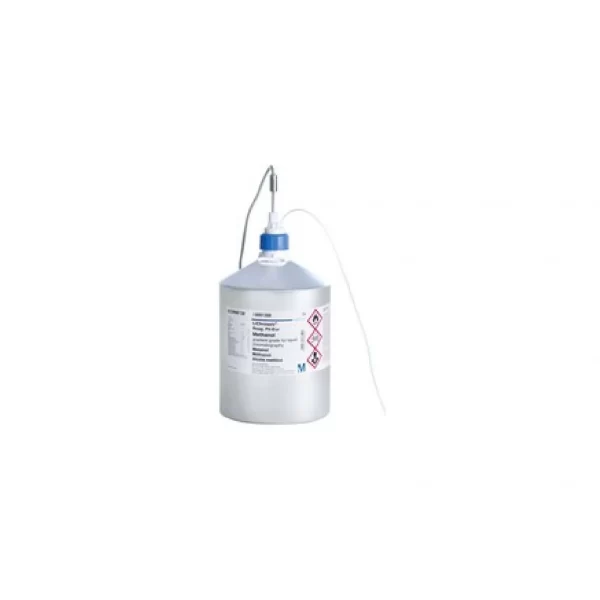
n-Hexane For Liquid Chromatography LiChrosolv® (Merck)
Login to see pricesBrand:
Merck
Description
CAS number: 110-54-3
Chemical Formula: CH₃(CH₂)₄CH₃
Molar Mass: 86.18 g/mol
Synonyms: –
For perfect high-performance liquid chromatography (HPLC) results, high-performance solvents are a must. LiChrosolv® solvents from Merck are designed to optimally support analytical HPLC, fast chromatography, and LC-MS applications.
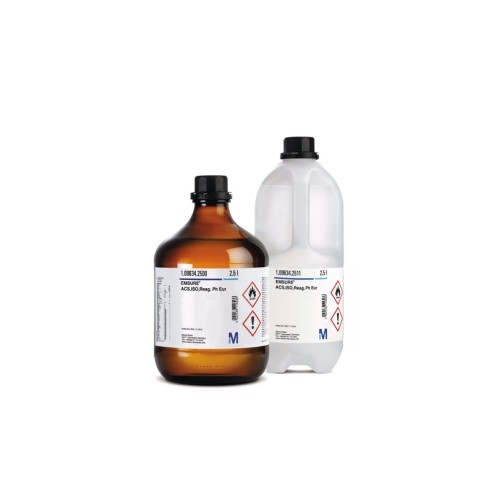
Zinc oxide for analysis EMSURE® ACS,Reag. Ph Eur
Login to see pricesBrand:
Merck
Description
CAS number: 1314-13-2
Chemical Formula: ZnO
Molar Mass: 81.39 g/mol
Synonyms: –
EMSURE® grade solvents are suitable for a broad spectrum of classical lab applications and are frequently used in regulated and highly demanding lab applications. EMSURE® provides worldwide best and most extensive product specifications. We declare our EMSURE® range to be in compliance with the ACS, with the reagent part of the European Pharmacopoeia (Reag. Ph Eur) and also with the ISO standards.
Product Specification and MSDS for Zinc oxide EMSURE® (Merck).

3-Chloroperbenzoic acid, ≤77% (Sigma-Aldrich)
Login to see pricesBrand:
Sigma-Aldrich
Description:
CAS number: 937-14-4
Chemical Formula: ClC6H4CO3H
Molar Mass: 172.57 g/mol
Synonyms: 3-Chloroperoxybenzoic acid, meta-Chloroperbenzoic acid, MCPBA
General description
3-Chloroperbenzoic acid is a strong oxidizing agent mainly used for the epoxidation of alkenes and also in the Baeyer-Villiger oxidation of ketones to esters.
Application
3-Chloroperbenzoic acid has been used in the oxidation of N–p-tolylsulfinyl-(E)-1-phenylethylideneimine to N–p-tolylsulfonyl (E)-1-phenylethylideneimine using dichloromethane as a solvent. It has also been used in the preparation of mono- and di-epoxy-functionalized poly(3-hydroxybutyrate)-based reactive polymers. MCPBA is also an effective oxidizing agent for the conversion of α-amide substituted polyesters to their corresponding polysulfones with tunable thermal properties.
Effective oxidant for epoxidizing di-, tri-, and tetra-substituted olefins.

CombiTitrant 5 , 1L (Merck)
Login to see pricesBrand:
Merck
Description
CAS Number : 7553-56-2
Density : 1.19 g/cm3 (20 °C)
One-component reagent for volumetric Karl Fischer titration 1 ml ≙ ca. 5 mg H₂O Aquastar®
Ethyl acetate for liquid chromatography LiChrosolv®
Login to see pricesBrand:
Merck
Description
CAS number: 141-78-6
Chemical Formula: CH₃COOC₂H₅
Molar Mass: 88.11 g/mol
Synonyms: Ethyl ethanoate, Acetic ester, Ethyl ester
With their high degree of UV transmittance, low particle count, low acidity and alkalinity and low evaporation residue level, LiChrosolv® solvents are ideal for reproducible separations. Since separations are normally carried out under gradient conditions in analytical HPLC, we offer solvents in “gradient grade” as well as “isocratic grade”. This enables to minimize the gradient effect of the solvent involved. Filtered by 0.2 µm filter
TLC Silica gel 60 F₂₅₄, (20×20 cm) – Merck
Login to see pricesBrand:
Merck
Description
For thin-layer chromatography applications, we offer Aluminum TLC plates that are coated with silica gel containing a fluorescent indicator F254. These silica gel TLC plates are available in a set of 25 and measure 20x20cm. Our classical silica TLC plates are created by combining our established silica gel 60 with a unique polymeric binder. This combination produces a very adherent and robust surface that will not crack or blister and can even withstand writing with a pencil without risking damage to the layer.

Phorbol 12-myristate 13-acetate, ≥99% (TLC, Sigma-Aldrich)
Login to see pricesBrand:
Sigma-Aldrich
Description
CAS number: 16561-29-8
Chemical Formula: C36H56O8
Molar Mass: 616.83g/mol
Synonyms: 12-O-Tetradecanoylphorbol 13-acetate, 4β,9α,12β,13α,20-Pentahydroxytiglia-1,6-dien-3-one 12-tetradecanoate 13-acetate, PMA, TPA
General description
Phorbol 12-myristate 13-acetate is a phorbol ester. It works as a tumour promoter and is involved in gene transcription, cell growth, differentiation, programmed cell death, immune pathway and receptor desensitization via protein kinase C (PKC) signalling pathways. Phorbol 12-myristate 13-acetate is also a model agent to study growth factors-, hormones-, and cytokines-mediated regulation of cellular growth and differentiation.
Application
Phorbol 12-myristate 13-acetate has been used for the stimulation of various cells including spleen cells, quiescent lymphocytes and fetal thymocytes. It has also been used for the activation of PKC (protein kinase C) in cells.
Solubility
DMSO: soluble (Dissolve in water-miscible organic solvent prior to preparing aqueous solutions. DMSO solutions can be stored dark at -20 °C for at least six months.)
Ethanol: soluble (Dissolve in water-miscible organic solvent prior to preparing aqueous solutions.)

Dichloromethane, HPLC Plus (Sigma-Aldrich)
Login to see pricesBrand:
Sigma-Aldrich
Description
CAS number: 75-09-2
Chemical Formula: CH2Cl2
Molar Mass: 84.93 g/mol
Synonyms: Methylene chloride, methylene chloride
Application
Suitable for HPLC, GC, spectrophotometry, environmental testing and residue analysis.

Water Standard 0.1%, Certified Reference Material (Merck)
Login to see pricesBrand:
Merck
CAS no.: 1589-47-5, 107-98-2
Traceability: Certified Reference Material for Karl Fischer Titration 1 g ≙ 1 mg H₂O Aquastar®
Synonym: –
Quality level: MQ300
Product specification and SDS for Water Standard 0.1%.
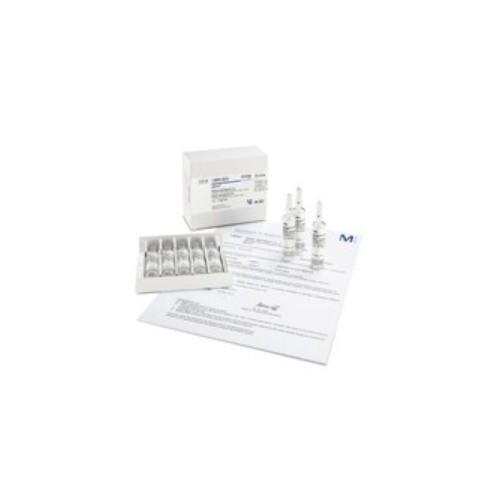
Water Standard 1%, CRM for Karl Fischer Titration (Merck)
Login to see pricesBrand:
Merck
CAS no.: 1589-47-5, 107-98-2
Chemical Formula: –
Molecular Weight: –
Synonym: Water standard 1% Certified Reference Material for Karl Fischer Titration 1 g ≙ 10 mg H₂O Aquastar®
Quality level: MQ300
Product specification for Water standard 1% CRM for Karl Fischer Titration

Glycerol, For Molecular Biology, ≥99.0% (Sigma-Aldrich)
Login to see pricesBrand:
Sigma-Aldrich
Description
CAS number: 56-81-5
Chemical Formula: HOCH2CH(OH)CH2OH
Molar Mass: 92.09 g/mol
Synonyms: 1,2,3-Propanetriol, Glycerin
General description
Glycerol is odourless, colourless, viscous in nature, and exists as a sweet-tasting liquid. It can be derived naturally as well as from petrochemical feedstock. Glycerol has a wide variety of applications and is one of the most valuable and versatile chemical substances in nature. It can be used as an emollient, solvent, sweetening agent, in pharmaceutical formulations, cosmetics, foodstuffs and toiletries. It is very stable and can be easily stored under normal temperature; also it is non-irritating and has no adverse impact on the environment.
Application
Glycerol has been used as:
• A supplement during cell culture of Mycobacterium tuberculosis and Mycobacterium avium.
• A fuel during designing enzymatic biofuel cell.
• A liquid composite matrix with 4-HCCA and 3-aminoquinoline for analysis of neutral and acidic glycans.
• A matrix for fast atom bombardment MS.
• May be employed as liquid matrix for the quantification studies by MALDI (Matrix-assisted laser desorption/ionization mass spectrometry) analysis.
Glycerol is used both in sample preparation and gel formation for polyacrylamide gel electrophoresis. Glycerol (5-10%) increases the density of a sample so that the sample will layer at the bottom of a gel′s sample well. Glycerol is also used to aid in casting gradient gels and as a protein stabilizer and storage buffer component.
Glycerol is used both in sample preparation and gel formation for polyacrylamide gel electrophoresis. Glycerol (5-10%) increases the density of a sample so that the sample will layer at the bottom of a gel’s sample well. Glycerol is also used to aid in casting gradient gels and as a protein stabilizer and storage buffer component.
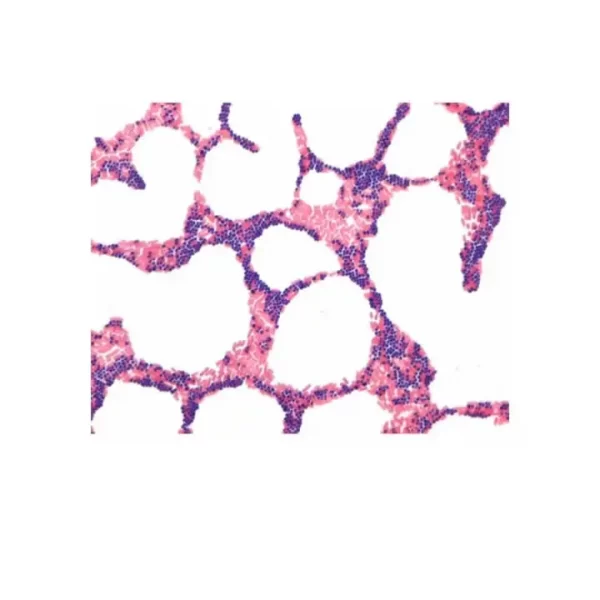
Gram-Color Stain set for the Gram staining method-Merck
Login to see pricesBrand:
Merck
Description
Gram-Color – stain set for the Gram staining method, is used for human-medical cell diagnosis and serves the purpose of the bacteriological investigation of sample material of human origin, for example smears of body fluids. The Gram-Color solutions are modified and designed in such a way that staining can be carried out in staining cells, on the staining rack, and also in automated staining systems. Gram-color modified, phenol-free is a staining set for staining microorganisms. Aniline dyes in the cell tissue of microorganisms form a red dye-iodine complex when exposed to iodine. Sodium hydrogen carbonate enhances the formation of this complex further still. In gram-positive microorganisms the dye-iodine complex cannot be subsequently dissolved from the cells by decolorizing agents such as alcohol or acetone. The cell remains dark blue in color. In gram-negative microorganisms the dye-iodine complex is dissolved and the cell turns red as a result of counterstaining with fuchsin. Gram-color modified, phenol-free is an IVD / CE product.
The package is sufficient for 250 applications. For further information, please see the IFU which can be found in the kit.

Glutathione, Certified Reference Material (Sigma-Aldrich)
Login to see pricesBrand:
Sigma-Aldrich
Description
CAS number: 70-18-8
Chemical Formula: H2NCH(CO2H)CH2CH2CONHCH(CH2SH)CONHCH2CO2H
Molar Mass: 307.32g/mol
Synonyms: γ-L-Glutamyl-L-cysteinyl-glycine, L-Glutathione reduced, GSH
Amino Acid Sequence
γ-Glu-Cys-Gly
General description
Glutathione (GSH) is the most important nonprotein thiol widely distributed in animal tissues, plants, and microorganisms. GSH is also a key determinant of redox signalling and protection against oxidative stress.
Pharmaceutical secondary standards for application in quality control, provide pharma laboratories and manufacturers with a convenient and cost-effective alternative to the preparation of in-house working standards.
Application
HPLC: suitable
Gas Chromatography (GC): suitable
These Secondary Standards are qualified as Certified Reference Materials. These are suitable for use in several analytical applications including but not limited to pharma release testing, pharma method development for qualitative and quantitative analyses, food and beverage quality control testing, and other calibration requirements.
May be used at 5-10 mM to elute glutathione S-transferase (GST) from glutathione agarose.
Biochem/physiol Actions
Endogenous antioxidant that plays a major role in reducing reactive oxygen species formed during cellular metabolism and the respiratory burst. Glutathione-S-transferase catalyzes the formation of glutathione thioethers with xenobiotics, leukotrienes, and other molecules that have an electrophilic center. Glutathione also forms disulfide bonds with cysteine residues in proteins. Via these mechanisms, it can have the paradoxical effect of reducing the efficacy of anti-cancer agents.

Cetyltrimethylammonium Bromide for Molecular Biology (Merck)
Login to see pricesBrand:
Merck
Description
CAS number: 57-09-0
Chemical Formula: C₁₉H₄₂BrN
Synonyms: Cetrimide, CTAB
Purity: ≥98% by TLC
Contaminants: DNases, proteases, RNases: none detected
Cationic detergent is suitable for the isolation of high molecular weight DNA in plants and other organisms.
Product Specification and MSDS for Cetyltrimethylammonium Bromide for Molecular (Merck).
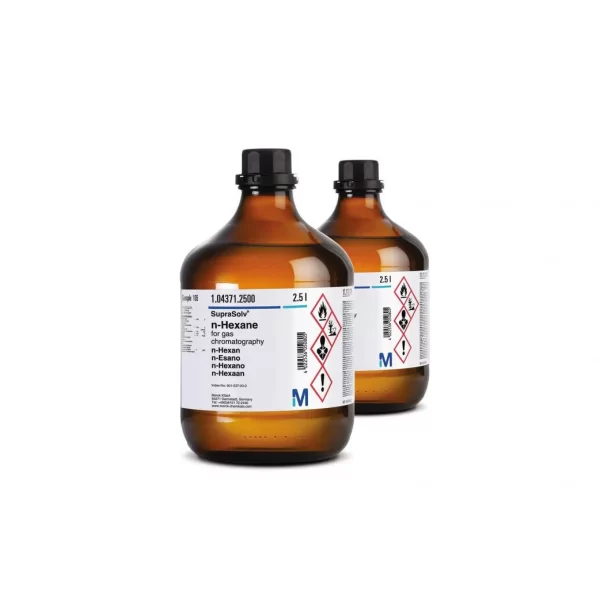
n-Hexane for Gas Chromatography MS SupraSolv®, Merck
Login to see pricesBrand:
Merck
Description
CAS number: 110-54-3
Chemical Formula: CH₃(CH₂)₄CH₃
Molar Mass: 86.18 g/mol
Synonyms: –
SupraSolv® MS is specifically designed for gas chromatography coupled with mass spectrometric detection. SupraSolv® solvents are known for providing the widest specified retention time range, a clear baseline, and a minimal signal-to-noise ratio. This results in highly reliable and reproducible analysis outcomes.

Dimidium bromide, BioReagent, suitable for fluorescence, ~95% (AT), Sigma
Login to see pricesBrand:
Sigma-Aldrich
CAS number: 518-67-2
Chemical Formula: C20H18BrN3
Molar Mass: 380.28 g/mol
Synonyms: 3,8-Diamino-5-methyl-6-phenylphenanthridinium bromide, Trypadine
Application
Intercalating probe for nucleic acids. Suitable for fluorescence.

4-Nitrophenyl butyrate, ≥98% (Sigma-Aldrich)
Login to see pricesBrand:
Sigma-Aldrich
Description
CAS number: 2635-84-9
Chemical Formula: C10H11NO4
Molar Mass: 209.20 g/mol
Synonyms: p-Nitrophenyl butyrate, Butyric acid 4-nitrophenyl ester
General description
4-Nitrophenyl butyrate is a substrate for esterase, and lipase enzyme. Hydrolysis of 4-nitrophenyl butyrate by these enzymes releases the chromophore, 4-nitrophenolate which is spectrophotometrically analysed at 415 nm.
Application
4-nitrophenyl butyrate has been used:
• as a substrate for esterase activity in monocyte-derived macrophage cell line in response to polyethylene
• as a substrate for mycobacterial phospholipase A and mycobacterial cutinase activity
• as a substrate to determine the effect of buffers and solvents on human carboxylesterase

LB broth (MILLER) for Microbiology (Merck)
Login to see pricesBrand:
Merck
Description
LB-Broth is based on the formulation of MILLER (1972) supporting the growth of E. coli. Casein peptone and yeast extract supply essential growth factors, such as nitrogen, carbon, sulfur, minerals and vitamins.
Typical Composition of LB-Broth (Miller, Merck)
| Typical Formula * |
gm/litre
|
| Yeast extract |
5.0 |
| Peptone from casein |
10.0 |
| Sodium chloride |
10.0 |
|
|
Preparation of LB Broth (Miller)
Suspend 25 g LB-Broth in 1 litre of demineralized water and autoclave for 15 min at 121 °C. at 25 °C (pH: 7.0 ± 0.2). The prepared broth is clear and yellowish-brown.
Experimental Procedure
According to appropriate use or purpose. Incubation: 24 h at 35-37 °C aerobically.
Product Specification and MSDS for LB Broth, Miller (Merck).

1-Propanol for analysis EMSURE® ACS,Reag. Ph Eur (Merck)
Login to see pricesBrand:
Merck
Description
CAS number: 71-23-8
Chemical Formula: CH₃CH₂CH₂OH
Molar Mass: 60.1 g/mol
Synonyms: n-Propyl alcohol, Propan-1-ol
EMSURE® grade solvents are suitable for a broad spectrum of classical lab applications and are frequently used in regulated and highly demanding lab applications. EMSURE® provides worldwide best and most extensive product specifications. We declare our EMSURE® range to be in compliance with the ACS, with the reagent part of the European Pharmacopoeia (Reag. Ph Eur) and also with the ISO standards.
Product Specification and MSDS for 1-Propanol EMSURE® (Merck).
Acetonitrile Gradient Grade for Liquid Chromatography LiChrosolv® Reag. Ph Eur. (Merck)
Login to see pricesBrand:
Merck
Description
CAS number: 75-05-8
Chemical Formula: CH₃CN
Molar Mass: 41.05 g/mol
Synonyms: ACN, Methyl cyanide, Ethyl nitrile, Cyanomethane
With their high degree of UV transmittance, low particle count, low acidity and alkalinity and low evaporation residue level, LiChrosolv® solvents are ideal for reproducible separations. Since separations are normally carried out under gradient conditions in analytical HPLC, we offer solvents in “gradient grade” as well as “isocratic grade”. This enables to minimize the gradient effect of the solvent involved. Filtered by 0.2 µm filter. Suitable for UPLC / UHPLC /Ultra HPLC – instruments.
Toluene for liquid chromatography LiChrosolv®
Login to see pricesBrand:
Merck
Description
CAS number: 108-88-3
Chemical Formula: C₆H₅CH₃
Molar Mass: 92.14 g/mol
Synonyms: Toluol, Methylbenzene
With their high degree of UV transmittance, low particle count, low acidity and alkalinity and low evaporation residue level, LiChrosolv® solvents are ideal for reproducible separations. Since separations are normally carried out under gradient conditions in analytical HPLC, we offer solvents in “gradient grade” as well as “isocratic grade”. This enables to minimize the gradient effect of the solvent involved. Filtered by 0.2 µm filter.

Bactident® Coagulase (Merck)
Login to see pricesBrand:
Merck
Description
HS Code: 3002 12 00
Quality level: MQ100
Coagulase:
– Staphylococcus aureus ATCC 25923 (WDCM 00034): Positive (+)
– Staphylococcus epidermidis ATCC 12228 (WDCM 00036): Negative (-)
– Negative control: Negative (-)

